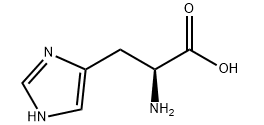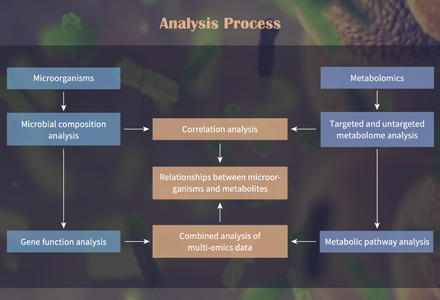Histidine Analysis Service
Submit Your InquiryWhat is Histidine and Histidine Metabolism?
Histidine is an essential amino acid that plays a crucial role in various biological processes. It is one of the 20 standard amino acids that are the building blocks of proteins in living organisms. Histidine is not only important for protein synthesis but also serves as a precursor for the synthesis of various essential molecules.
Histidine metabolism refers to the biochemical processes involved in the synthesis, degradation, and interconversion of histidine within the body. These processes are tightly regulated to maintain appropriate histidine levels and ensure its availability for various physiological functions.
Histidine can be metabolized through different pathways, including:
- Histidine Biosynthesis: Histidine can be synthesized de novo from precursor molecules. This pathway involves a series of enzymatic reactions that ultimately lead to the production of histidine.
- Histidine Degradation: Histidine can also be broken down into smaller compounds through histidine degradation pathways. One such pathway is the histidine-to-histamine conversion, which involves the enzyme histidine decarboxylase.
- Histidine Interconversion: Histidine can be interconverted with other amino acids through enzymatic reactions. For example, histidine can be converted into glutamate through transamination reactions, contributing to the overall amino acid pool in the body.
Abnormal histidine metabolism can lead to histidinemia, which is characterized by elevated levels of histidine in the blood or histamine intolerance, meaning that the body has difficulty metabolizing histamine properly. Understanding histidine and its metabolism is important for gaining insight into the role and function of this amino acid in various biological processes. Analyzing histidine levels and studying its metabolic pathways can help in understanding cellular metabolism, disease mechanisms, and developing targeted therapies.
Creative Proteomics combines high-performance liquid chromatography (HPLC) and mass spectrometry (MS) to provide accurate and reliable analysis of histidine levels. HPLC is able to separate histidine from other amino acids, while MS provides sensitive and specific detection and quantification.
 Figure 1. Histidine chemical structure
Figure 1. Histidine chemical structure
Analyzable Histidine List
Workflow of Histidine Assay
Our newly developed sample preprocessing method provides efficiency, recovery rates consistently exceeding 85%, and environmental protection. Sample preprocessing at Creative Proteomics complies with in-house standard operation procedures (SOPs), maximizing homogeneity between samples.
 Figure 2. Histidine analysis service workflow.
Figure 2. Histidine analysis service workflow.
Quantitation method: external reference method or isotope-labeled internal standard method
Mode: MRM, capable of simultaneously detecting more than 1000 MRM ion pairs
Precision: ≤10-9 g
Positive/Negative polarity switching time: ≤20 ms, allowing for the acquisition of Q1/Q3 MRM transition mass spectra in both ionization modes from a single LC-MS/MS run.
Analysis content:
- Analysis content
- Standard curve drawing
- Raw data preprocessing
- Absolute quantitation of histidine
- Differential metabolites screening
- Optimal analyses such as KEGG pathway analysis and hierarchical clustering
Applications of Histidine Analysis
Metabolic Profiling: Histidine analysis provides insights into the balance of amino acids and helps in profiling the overall metabolic state of an organism or system.
Diagnostic Marker: Abnormal histidine levels can indicate metabolic disorders, allowing for early diagnosis and appropriate treatment strategies.
Nutritional Assessment: Histidine analysis helps assess an individual's nutritional status and identifies deficiencies or imbalances that may impact overall health.
Pharmacological Studies: Histidine analysis is valuable in drug development and evaluating the effectiveness of histidine-based compounds in pharmacological studies.
Biomarker Discovery: Histidine levels may serve as biomarkers for specific diseases or conditions, aiding in early detection and monitoring treatment responses.
Sample Requirements
- Blood/plasma: 500ul/sample
- Urine: 1ml/sample
- Tissue: 200mg/sample
- Cells: 1x107/sample
- Feces: 500mg/sample
- Sample storage and transportation: Store in liquid nitrogen or -80°C, and transport on dry ice.
- Number of biological replicates: At least 6 biological replicates for plant samples, and at least 10 biological replicates for animal samples
Delivery
- Experimental procedure
- Parameters of liquid chromatography and MS
- Extracted mitochondria and purified protein sample
- Purity analysis report
- MS raw data files and MS data quality checks
- Metabolites quantification data
- Custom analysis report
We can provide customers with sample processing, testing, analysis, and other professional technical services, and work with our customers to improve product quality. From sampling to analysis, we provide one-stop services. Our experienced team guarantees to produce credible results at a competitive price.
References
- Wang Weining, Li Yuanbo, et al, Terahertz spectroscopy study of histidine and arginine. Journal of Physics, 2007.
- Zhao Xirong, Kang Lianchun, et al, Peutz-Jeghers syndrome fragile histidine triad gene mutation and carcinogenesis. Cancer: English Version, 2003.
- Zhang Zhaohui, Zhang Huabin, et al, Preparation and characterization of histidine chiral identification imprinting stationary phase. China National Knowledge Infrastructure, 2008.







